October 9, 2012 at 9:55 pm
 As humans, it is inevitable to believe that we are born into this world with an instinct; an unknown conscious which is the means to our development. Without this instinct, many of the activities we take for granted would be a prioritized thought (i.e. breathing, sleeping, and walking). If humans were not born into this world with an instinct, everyday life would be a struggle because our minds would have to think each reflex through for every movement. Read More »
As humans, it is inevitable to believe that we are born into this world with an instinct; an unknown conscious which is the means to our development. Without this instinct, many of the activities we take for granted would be a prioritized thought (i.e. breathing, sleeping, and walking). If humans were not born into this world with an instinct, everyday life would be a struggle because our minds would have to think each reflex through for every movement. Read More »
By nrjbasu
|
Posted in Student post
|
October 9, 2012 at 6:12 pm
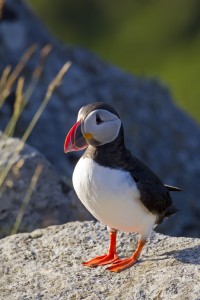
Source: Wikipedia
Atlantic Puffins truly are remarkable birds. Puffins can swim underwater and fly in the air. They have evolved their high speed wings and their rudder like webbed feet enabling them to swim efficiently underwater, where they catch small fish including herring and sand eel. They can dive to a depth of 200 ft and can stay underwater for 20 to 30 seconds. When underwater, the puffin is essentially flying, but it just has more resistance than in the air.
How exactly does a Puffin manage to dive and swim through the water so effectively? Well, the Puffin partly folds its wings and has its hand wings directed backwards. Because of this and its ability to flap very fast, during the downstroke the bird accelerates upwards and forward through the water. Then, during the upstroke, the bird accelerates downwards and rarely also forwards. Most of the time however, the upstroke just causes the puffin to decelerate.
Read More »
By Daniel Vasilyonok
|
Posted in Student post
|
Tagged atlantic, puffin, underwater bird
|
October 9, 2012 at 7:24 am
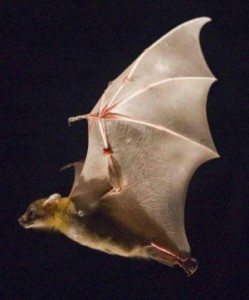 With the help of Hollywood, bats throughout the years have given the wrong impression to the general public. Portrayed as blood suckers that only mean to harm people, these amazing creatures in actuality are vital and essential to protecting our ecosystems.
With the help of Hollywood, bats throughout the years have given the wrong impression to the general public. Portrayed as blood suckers that only mean to harm people, these amazing creatures in actuality are vital and essential to protecting our ecosystems.
With bats being one of the bug exterminators of the animal kingdom and with their help of pollinating the plant life, it's clear how they affect our lives in many ways. How can this all be achieved though? What allows these animals to do so much? Nothing would be possible if it weren't for the gift of flight.
Read More »
By Andrés
|
Posted in Student post
|
Tagged bats
|
October 8, 2012 at 11:24 pm

the robot used by researchers to conduct testing.
Researchers at Harvard and MIT have been hard at work trying to understand the mechanics of in flight collision avoidance in birds. the goal of this project is to develop small Unmanned Aerial Vehicles that can navigate a forest or urban setting without crashing into trees or buildings, while still being able to fly relatively quickly.
Read More »
By lneves
|
Posted in Student post
|
Tagged avoidance, bio-inspired engineering, birds, coordination, flight, flying, Harvard, MIT, obstacles, robots, UAVs
|
October 8, 2012 at 10:15 pm

Credit: Grant Brummet
Bats aren't the only aerial predator of night. Owls with their stealth abilities and quick moves dominate the night. Owls are known as the most silent flying animal. How do owls approach their prey so fast without being noticed?
Can we take their solution of silence and apply it to our aircraft?
Read More »
By Mehmet Akbulut
|
Posted in Student post
|
Tagged birds, fluid, hunt, owl, predator, prey, serration, silence, turbulence, wing
|
October 8, 2012 at 9:49 pm
The Quetzalcoatlus, named after the frightening Aztec God, was a ptrodactyloid dinosaur known for being the largest creature to ever take flight.

A radio-controlled model of Quetzalcoatlus northropi, digitally superimposed over a picture of the sun.
With an astonishing wingspan of 40 feet and a weight of 400 pounds, these species must have been incredibly feared as they soared through the skies in search of food. Right? Well, maybe not! Up to this date, the biomechanics behind the giant ptosaurus flight remains a mystery. Some paleontologists are even struggling to decide whether this bewildering creature was in fact able to flutter across the sky.
Leading scientists have claimed that this ancient reptile, which could grow to the size of small airplanes, was simply too heavy to fly. According to their research, ptrodactyls were not able to flap their wings fast enough and generate sufficient thrust to maintain their enormous bodies airborne.
Read More »
By Maria Fernanda Torres
|
Posted in Student post
|
October 8, 2012 at 4:10 pm
 The Galapagos Islands, a group of islands in the South Pacific off the coast of South America, became infamous in 1859 because of the industrious work of Charles Darwin, a naturalist.
The Galapagos Islands, a group of islands in the South Pacific off the coast of South America, became infamous in 1859 because of the industrious work of Charles Darwin, a naturalist.

Darwin’s research came under extreme scrutiny because his book, On the Origin of Species, claimed that evolution occurred, arguing against the common held beliefs of the time. What Darwin’s study taught us was not only significant for biology but for our understanding of all sciences. From an engineering perspective Darwin’s discovery of evolution across islands so close is tremendous.
Read More »
By tdiorio
|
Posted in Student post
|
October 4, 2012 at 11:36 pm
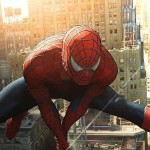
With great power, comes great images
The image of Spider-man swinging through New York City on his webs is a familiar image to many people. He looks cool and dynamic as he flawlessly swings from building to building using his powerful webs. Luckily, for the many people who are scared of spiders, spiders can't actually fly around like Spider-man can. Or can they...?
Spiders are arthropods with eight legs with fangs that can inject venom. They come in all kinds of shapes and sizes. Most spiders are not dangerous to humans but some species, like the black widow spider, can be deadly. There are about 38,000 species of spiders worldwide on every continent except Antarctica.
Read More »
By Earl Lin
|
Posted in Student post
|
October 4, 2012 at 6:58 pm
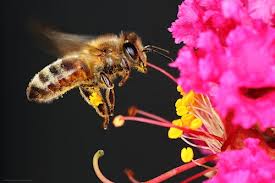 Proponents of intelligent design thought they had this small, yet vastly important, query under their control, or in the bag if you will. The flight of bees, that is. In the mid-1930s, French entomologist August Magnan came to the strikingly weird, yet seemingly true observation, that bees' flight was aerodynamically impossible. However, most humans have witnessed at least one girl leap out of their seat at the sight of a flying bee. So how can this statement be true? How can bees' flight be theoretically impossible and still practically possible?
Proponents of intelligent design thought they had this small, yet vastly important, query under their control, or in the bag if you will. The flight of bees, that is. In the mid-1930s, French entomologist August Magnan came to the strikingly weird, yet seemingly true observation, that bees' flight was aerodynamically impossible. However, most humans have witnessed at least one girl leap out of their seat at the sight of a flying bee. So how can this statement be true? How can bees' flight be theoretically impossible and still practically possible?
Read More »
By John McCullough
|
Posted in Student post
|
Tagged bees, flight, honeybee, vortices
|
October 3, 2012 at 5:20 pm
There's no way bumble bees can fly! Their body is way too big, their wings too small. And it makes sense because wing loading increases as weight increases (bumble bees are definitely heavy) and the higher the wing loading the faster you must fly. With such small wings, there's no way they can generate enough lift to fly.
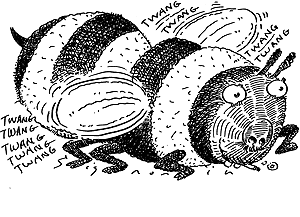
overweight bumble bee
Read More »
By Henry Liang
|
Posted in Student post
|
 As humans, it is inevitable to believe that we are born into this world with an instinct; an unknown conscious which is the means to our development. Without this instinct, many of the activities we take for granted would be a prioritized thought (i.e. breathing, sleeping, and walking). If humans were not born into this world with an instinct, everyday life would be a struggle because our minds would have to think each reflex through for every movement. Read More
As humans, it is inevitable to believe that we are born into this world with an instinct; an unknown conscious which is the means to our development. Without this instinct, many of the activities we take for granted would be a prioritized thought (i.e. breathing, sleeping, and walking). If humans were not born into this world with an instinct, everyday life would be a struggle because our minds would have to think each reflex through for every movement. Read More 
 With the help of Hollywood, bats throughout the years have given the wrong impression to the general public. Portrayed as blood suckers that only mean to harm people, these amazing creatures in actuality are vital and essential to protecting our ecosystems.
With the help of Hollywood, bats throughout the years have given the wrong impression to the general public. Portrayed as blood suckers that only mean to harm people, these amazing creatures in actuality are vital and essential to protecting our ecosystems.






